Today’s Current Affairs: 17th Oct 2023 for UPSC IAS exams, State PSC exams, SSC CGL, State SSC, RRB, Railways, Banking Exam & IBPS, etc
Table of Contents
Jaderi Namakatti : GI Tag
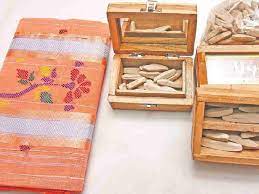
The Jaderi namakatti was given the GI tag by the Geographical Indications Registry in Chennai.
- Jaderi namakatti are clay sticks that are white in colour, usually available in finger-like shape with a smooth texture.
- Jaderi is a small village in Tiruvannamalai district of Tamil Nadu.
- There are around 120 families in Cheyyar taluk whose primary occupation has been the making of namakatti for more than hundreds of years now.
- Namakatti is made up of the rich deposit of hydrous silicate minerals that form fine grain particles of clay.
- The clay is processed and shaped in a finger like structure.
- The production of namakatti depends on the climatic condition as it needs a lot of sunlight to dry.
- It is used to adorn the foreheads of idols, men, and temple elephants as well as traditionally to treat stretch marks caused by by childbirth.
Hailstorm : Damage To The Crops
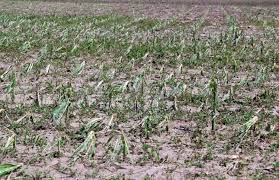
An intense hailstorm recently caused massive damage to the crops and fruits in south Kashmir’s Kulgam and Shopian districts.
- Hail is a type of solid rain made up of balls or lumps of ice.
- Storms that produce hail that reaches the ground are known as hailstorms.
- They typically last for no more than 15 minutes but can cause injuries to people and damage buildings, vehicles, and
- They are most common in the midlatitudes.
- Hailstorms can sometimes be accompanied by other severe weather events, such as cyclones and tornadoes.
- The size of hailstones can vary widely, from small pellets less than 1/4 inch in diameter to larger stones measuring several inches in size.
- Highly developed Cumulonimbus clouds need to be present.
- These are the massive anvil or mushroom-shaped clouds that are seen during thunderstorms, which can reach heights of up to 65,000 feet.
- There must be strong currents of air ascending through these clouds. These currents are commonly known as updrafts.
- The clouds will need to contain high concentrations of supercooled liquid water.
Jericho Missile System:
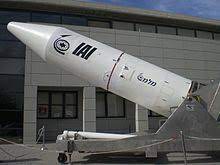
An Israeli legislator’s recent calls for the use of a “doomsday” weapon against Hamas and Palestine have once again put the spotlight on nuclear weapons in West Asia, particularly the Jericho missile system.
- Jericho is Israel’s original ballistic missile programme, initiated in the 1960s and named after the biblical city located in the West Bank.
- This programme was initially a collaboration with the French aerospace company Dassault, but when France withdrew in 1969, Israel continued its development.
- Jericho-1 had a weight of 6.5 tonnes, a length of 13.4 metres, and a diameter of 0.8 metres and range of 500 kilometres and could carry a 1,000-kilogram payload, though it had a 50 percent chance of hitting within a 1,000-metre radius of its target.
- Jericho-2 was developed in the late 1980s, with a length of 15 metres and a diameter of 1.35 metres, while maintaining the same payload capacity and range between 1,500 and 3,500 kilometres.
- Jericho-3 is the first Israeli Intercontinental Ballistic Missiles (ICBM).
- It was first tested in 2008 and entered service in 2011.
- It featured improvements over the previous models, with a longer length than Jericho-2 and a larger diameter of 1.56 metres.
What Is Stock Split?

Sigachi Industries (SIGACHI) recently initiated its long-anticipated 10:1 stock split.
- Stock Split happens when a company increases the number of its shares to boost the stock’s liquidity.
- It is a corporate action in which a company issues additional shares to shareholders, increasing the total by the specified ratio based on the shares they held previously.
- Although the number of shares outstanding increases, there is no change to the company’s total market capitalization as the price of each share will split as well.
- The most common split ratios are 2-for-1 or 3-for-1 (sometimes denoted as 2:1 or 3:1). This means that for every share held before the split, each stockholder will have two or three shares, respectively, after the split.
- The number of shares increases, but the price per share goes down in proportion.
- Stock split is done to infuse liquidity and to make shares affordable for various investors who could not buy the shares of that company before due to high prices.
2023 Global Survey On Persons With Disabilities And Disasters:

The UN Office for Disaster Risk Reduction (UNDRR) conducted the 2023 Global Survey on Persons with Disabilities and Disasters, following up on the 2013 survey.
- The report was released ahead of International Day for DRR
- Its theme “Fighting inequality for a resilient future” is aligned with the Sendai Framework.
- It is aimed to assess the preparedness of persons with disabilities for disasters, accessibility of early warning and risk information, awareness of disaster risk reduction (DRR) plans, and their participation in DRR decision-making.
- Disaster Risk Reduction (DRR) refers to the practices and strategies aimed at minimizing the risks and vulnerabilities associated with natural and human-made disasters.
Key results of the survey:
- Limited progress in disability inclusion in DRR over the past decade, with no significant regional differences.
- Low awareness of DRR plans among disabled
- Lack of DRR plans addressing the specific needs of persons with disabilities
- Limited participation in local-level DRR decisions by persons with disabilities
- 24% of respondents had been displaced due to crises or disasters, with armed conflict or violence being the leading cause of displacement.
Psyche Mission : Launched

NASA has launched a spacecraft called ‘Psyche’ on a six-year mission to study a unique metal-rich asteroid also named ‘Psyche.’
- This asteroid orbits the Sun between Mars and Jupiter.
- The primary goal of the Psyche mission is to explore the iron core, a previously unexplored aspect of planet formation
- For the first time, the mission will examine a celestial body primarily composed of metal rather than rock and ice.
- It aims to gain insights into the internal structure of terrestrial planets, including Earth, by directly studying the interior of a differentiated body, which would otherwise remain hidden.
Bufoides bhupathyi : New Toad Species
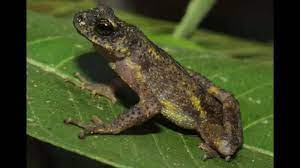
A new species of toad, called Bufoides bhupathyi, has been discovered in the Dampa tiger reserve of Mizoram, India.
- This marks the third species in a genus found in the north-eastern region of India.
- The previous two species, Bufoides meghalayanus and Bufoides kempi, were found in Meghalaya.
- To resolve taxonomic confusion, field surveys were conducted, leading to the discovery of Bufoides bhupathyi, which is distinct from other similar species in terms of interdigital webbing, colouration, skin tuberculation, and the presence of ovoid, tuberculated, and depressed parotid glands.
- The new species is currently known to exist only in the Dampa tiger reserve and is likely to meet the criteria for being assessed as critically endangered according to the International Union for Conservation of Nature (IUCN).
- It has been named after S Bhupathy, a prominent herpetologist who served as the principal scientist at the Salim Ali Centre for Ornithology and Natural History in Coimbatore.
India’s First CAR-T Cell Therapy Approved:
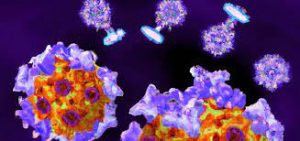
India’s Drug Controller General (DCGI) has granted market authorization for CAR-T (Chimeric Antigen Receptor-T) cell therapy developed by ImmunoACT, a spin-off company from IIT-Bombay.
- This ground-breaking treatment, known as NexCAR19, is now approved for use in cases of relapsed-refractory B-cell lymphoma and leukaemia.
- The therapy’s market authorization follows extensive scrutiny of data from phase 1 and 2 clinical trials by the Central Drugs Standards and Control Organisation (CDSCO).
- CAR T-cell therapies are a major breakthrough in cancer treatment.
- Unlike chemotherapy or immunotherapy which involve taking drugs, CAR T-cell therapies use a patient’s own cells.
- They are modified in the laboratory to activate T-cells and target tumor cells.
- CAR T-cell therapy has been approved for leukaemias (cancers arising from the cells that produce white blood cells) and lymphomas (arising from the lymphatic system).
- CAR T-cell therapies are even more specific than targeted agents and directly stimulate the patient’s immune system to fight cancer, leading to greater clinical efficacy.
The Impact Of Disasters On Agriculture And Food Security Report:

A report by the Food and Agriculture Organization (FAO) reveals that natural disasters have resulted in approximately $3.8 trillion worth of crop and livestock production losses over the past 30 years.
Highlights:
- The $3.8 trillion loss averages to $123 billion annually, equivalent to 5% of the global agricultural gross domestic product (GDP).
- Major agricultural products such as cereals, fruits, vegetables, sugar crops, meats, dairy products, and eggs have experienced significant losses over the last three decades.
- Cereal losses alone averaged 69 million tonnes per year, equivalent to France’s entire cereal production in 2021.
- Fruits and vegetables, as well as sugar crops, witnessed average losses of 40 million tonnes per year.
- Meats, dairy products, and eggs suffered an estimated loss of 16 million tonnes per year, comparable to the entire production of these products in Mexico and India in 2021.
- Asia, Africa, Europe, and the Americas all experienced substantial agricultural losses due to disasters.
- In Asia, losses accounted for 4% of agricultural added value, while in Africa, they amounted to nearly 8%.
- Lower and lower-middle-income countries incurred the highest relative losses, up to 15% of their total agricultural GDP.
- Small Island Developing States lost nearly 7% of their agricultural GDP due to disasters.
- Agriculture, highly dependent on natural resources and climate conditions, is one of the most vulnerable sectors to disaster risk.
- Recurrent disasters can undermine food security and the sustainability of agrifood systems.




